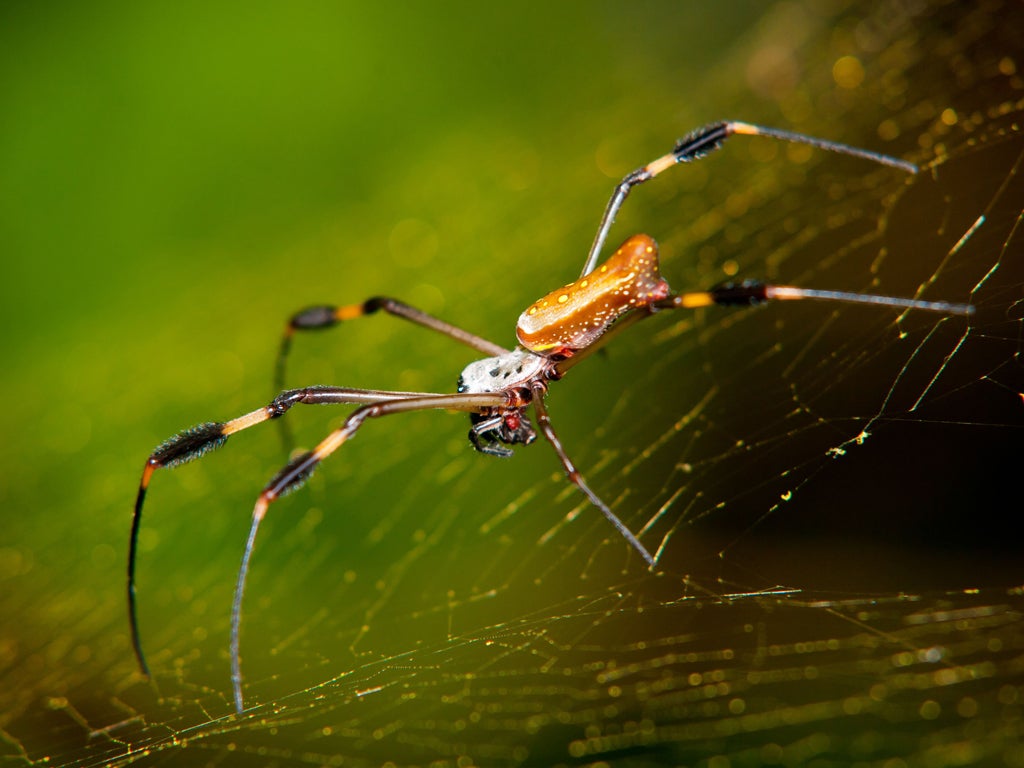Well, it worked for Peter Parker: genetic scientists unleash power of the spider web
Breakthrough may pave way for new biomaterials that could be used in medicine and engineering

Your support helps us to tell the story
From reproductive rights to climate change to Big Tech, The Independent is on the ground when the story is developing. Whether it's investigating the financials of Elon Musk's pro-Trump PAC or producing our latest documentary, 'The A Word', which shines a light on the American women fighting for reproductive rights, we know how important it is to parse out the facts from the messaging.
At such a critical moment in US history, we need reporters on the ground. Your donation allows us to keep sending journalists to speak to both sides of the story.
The Independent is trusted by Americans across the entire political spectrum. And unlike many other quality news outlets, we choose not to lock Americans out of our reporting and analysis with paywalls. We believe quality journalism should be available to everyone, paid for by those who can afford it.
Your support makes all the difference.Scientists have created genetically-modified silkworms that can spin the much stronger silken threads of spiders in a technological breakthrough that promises to revolutionise the production and use of new materials made with spider silk.
Click here to see the 'Caught in a web - turning silkworms into spider-silk factories' graphic
For more than a quarter of a century scientists have been trying to find ways of producing industrial-scale quantities of spider silk because, weight for weight, it is stronger than steel and almost as tough as bulletproof Kevlar. A net weaved from pencil-thick rope spun from spider silk, for instance, could in theory catch a fighter jet in flight without breaking.
However, unlike the caterpillars of the silk moth Bombyx mori, spiders are territorial, aggressive and prone to cannibalism, making it impossible to rear them in the population densities required for commercial silk production.
Researchers have attempted to overcome this difficulty by transferring into silkworms the key spider genes responsible for making the silk threads used in the draglines of the golden orb-web spider. The result was a genetically-modified "transgenic" silkworm that produced a mixture of its own silk combined with the far tougher and stronger threads of spider silk within the mile-long threads of its cocoon.
The researchers, led by Professor Don Jarvis of the University of Wyoming, in Laramie, yesterday published their study in the journal Proceedings of the National Academy of Sciences, showing how they created transgenic silkworms capable of making composite fibres with silk threads from both spiders and commercial silkworms.
"On average, the composite fibres produced by our transgenic silkworm lines were significantly tougher than those produced by the parental animals and as tough as native dragline spider silk fibre. In best-case measurements, the composite fibre produced by one of our transgenic silkworms was even tougher than the native dragline spider silk fibre," the scientists said.
Some possible uses for spider silk have already been identified in medicine, such as new kinds of biomaterials for wound dressings, artificial ligaments, tendons, tissue scaffolds and microcapsules for drug delivery, they say. Other uses could include materials used in bulletproof jackets and engineering.
Ever since scientists first identified the spider genes involved with silk production, biotechnologists have tried to created genetically-modified alternatives to spiders. Synthetic spider silk genes have been transferred into bacteria, tobacco plants and even goats, which produced limited quantities of silk proteins in their milk.
However, none of the transgenic microbes, plants or animals carrying spider silk genes have been able to produce sufficient quantities of the pure proteins needed for commercial-scale production.
But it is hoped that the Bombyx mori silkworm, which has a proven record in industrial silk production, may finally offer a solution to the scale-up problem.
Join our commenting forum
Join thought-provoking conversations, follow other Independent readers and see their replies
Comments